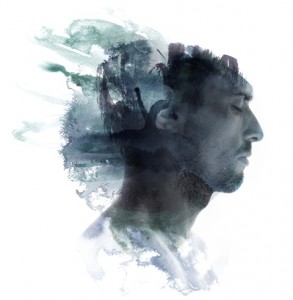 In recent decades, neuroscience and psychotherapy have joined forces in seeking to understand the biological bases of behavior. The brain is a complex organ, and as we study its function and adaptations we create a window of understanding into how our brains, bodies, and psyches respond to traumatic stimuli.
In recent decades, neuroscience and psychotherapy have joined forces in seeking to understand the biological bases of behavior. The brain is a complex organ, and as we study its function and adaptations we create a window of understanding into how our brains, bodies, and psyches respond to traumatic stimuli.
Have you ever heard of the triune brain? This is a simplified, three-part model of the brain, as originally explained by Dr. Daniel Siegel, that helps us to understand the neurological development of our species and clarifies both the reactions to and treatment of trauma.
Try this with me: Hold your dominant hand out in front of you. Have your palm facing you and look at your wrist and the base of your palm. We will call this your brain stem. (Stay with me now; we’ll explore what that means below.)
Now fold your thumb in toward your palm, as if you are signaling the number four with your extended fingers. This thumb will be your limbic brain. Lastly, cover your thumb with those four fingers, wrapping them over the thumb. This third part, the fingers, we’ll call the prefrontal cortex.
Look at that: your brain is in your hands! You now have a portable brain model that you can carry with you and use to share this information with others. Now let’s explore the function of each of these three parts of the brain.
Your brain stem, located at the base of your neck at the top of your spinal cord, is the most primitive part of the brain. It governs the functions that keep you alive—your breathing, heart rate, and basic physiological functioning. Fight-or-flight responses involve this area in that they are automatic (not consciously chosen) responses to stress and traumatic situations.
Your limbic brain is where emotional responses register. When you get angry, reactive, or experience intense emotion, this area of the brain tends to have more activity. Scientists can actually see this on functional MRI brain scans.
Often, when trauma occurs we are captivated by the activity in the brain stem and limbic brain and our access to executive function feels difficult, if not impossible. Knowing this, we can make it a goal to reengage the prefrontal cortex in a helpful way.
Lastly, we come to your prefrontal cortex. This is the frontal lobe of the brain, that area just behind the skin and bone of your forehead. This is the area of executive function, the place in the brain where we make conscious decisions.
You may be wondering: how does all of this relate to trauma? Let’s start with what happens to these parts of the brain when something traumatic occurs. I mentioned earlier that the fight-or-flight response is not a conscious choice, but a biological reaction initiated in the brain stem area. Your body experiences the impulse to fight or flee (or freeze, as it may be). This trauma response feels, and is, out of your conscious control.
The limbic brain may hold intense emotion related to the traumatic experience—particularly when the trauma involves a relationship with another person. You may feel sad, angry, overwhelmed, or helpless.
Now here is the catch—and an opportunity for deep learning. Often, when trauma occurs we are captivated by the activity in the brain stem and limbic brain and our access to executive function feels difficult, if not impossible. Knowing this, we can make it a goal to reengage the prefrontal cortex in a helpful way. Here are some examples of how to practice this:
- Counting down from 10 to one when feeling angry.
- Looking around the room for objects of a certain color when feeling pulled into a traumatic memory.
- Bringing the focus of attention to your forehead, even by placing your thumb there to bring your attention to this area of your brain.
There are some therapeutic techniques of grounding and orienting that can help you to cope with some of the overwhelming emotions associated with trauma. Try them with small things in life—counting down from 10 to one while in traffic, looking for orange objects when you find yourself pulled into a past memory, or focusing on the center of your forehead as a point of meditation. These practices can help build your ability to access the prefrontal cortex during upsetting and even traumatic moments.
Remember, your brain is in your hands! You can look at this hand model any time by creating a fist with your thumb tucked in, then asking yourself, “What part of the brain am I living in?” This simple question begins to engage your prefrontal cortex. We know that our brains are resilient and respond to our thought patterns and habits, so the more you exercise your brain in this way, the stronger the neural connection can become. Cheers to you and your triune brain!
Reference:
Siegel, D. J. (2010). Mindsight: The new science of personal transformation. New York: Bantam Books.

The preceding article was solely written by the author named above. Any views and opinions expressed are not necessarily shared by GoodTherapy.org. Questions or concerns about the preceding article can be directed to the author or posted as a comment below.


 What Makes Complex Trauma So Complex?
What Makes Complex Trauma So Complex? It Follows: The Long-Lasting Effects of Abuse and Trauma
It Follows: The Long-Lasting Effects of Abuse and Trauma Between Therapy Sessions: 3 Handy Coping Skills for Trauma
Between Therapy Sessions: 3 Handy Coping Skills for Trauma

Please fill out all required fields to submit your message.
Invalid Email Address.
Please confirm that you are human.
Leave a Comment
By commenting you acknowledge acceptance of GoodTherapy.org's Terms and Conditions of Use.